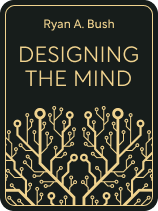

This article is an excerpt from the Shortform book guide to "Designing the Mind" by Designing the Mind and Ryan A Bush. Shortform has the world's best summaries and analyses of books you should be reading.
Like this article? Sign up for a free trial here.
Why is it so hard to break bad habits? How can you break the tendency to engage in habitual behaviors that sabotage your success?
Bad habits tend to be the behaviors that make us feel good in the short term. Because we seek instant gratification over long-term results, bad habits often seem more appealing than many good habits that require us to put in more work.
Here are two strategies for breaking bad habits and forming beneficial habits in their stead.
How to Change Your Habits
Good habits are behavioral patterns that push you toward your goals, while bad ones take you away from your goals. Generally, habits are so hard to break because they’re formed in a part of our brain that’s out of our conscious control, leaving us mostly unaware that we’re engaging in them.
In his book Designing the Mind, Ryan A. Bush describes two strategies for breaking bad habits:
Strategy #1: Keep Track of Your Habits
According to Bush, just keeping track of your habits can sometimes be enough to break bad ones. To change your behavior, you have to first understand and analyze your current patterns, which this strategy promotes.
Start by writing a list of habits you want to have and habits you don’t want. For example, maybe you want to cook five nights a week and take your dog for a walk every morning, but you also want to stop biting your nails and procrastinating on your email responses. Once you have your list, keep a record of how many times you do each habitual behavior per week. You’ll see how much of a hold bad habits have on your time, and you can then take the steps necessary to break them.
(Shortform note: When trying to change your habits, Jack Canfield also argues that you should start by identifying old habits you want to change and new habits you want to implement. In The Success Principles, he expands on this strategy: He suggests narrowing things down and focusing on changing just four habits every year. Studies show that it takes about 13 weeks to establish a new habit, so you can learn a new one every quarter. Start by listing your four bad habits and explaining why they’re potentially harmful. Then, identify a new behavior to replace the old one. Finally, create a plan with specific steps that will help you implement the new habits, and focus on one plan per quarter.)
Strategy #2: State How You Plan to Spend Your Time in Advance
According to Bush, you can create a new, positive habit by setting clear intentions and goals for enacting it. We’re often too vague when trying to implement a new behavior—without a specific plan, we’re much less likely to follow through. This is because we have to use more willpower and make more decisions when the time comes for us to actually engage in the new behavior. If you have a plan beforehand, that mental work is already done for you.
When planning a new habit, express the following in specific terms:
- The behavior you want to implement
- The exact time and day you’ll implement it
- The location where you’ll implement it
For example, instead of saying to yourself, “I want to walk my dog more,” say “I want to take my dog for a half-hour-long walk every morning at 7:00 am in the park.”
(Shortform note: After planning out the details of your habit (and thus eliminating the risk that you’ll succumb to decision fatigue), you can further increase your likelihood of success by visualizing yourself enacting the plan. In Organize Tomorrow Today, Jason Selk, Tom Bartow, and Matthew Rudy describe how visualization prepares your mind and body for an action before you really take it. It allows you to rehearse what you want to happen, meaning that by the time you have to do the action you visualized, you’ll feel more prepared for potential challenges and surprises. Therefore, if you picture yourself doing the behavior at the time and in the place you planned, you’ll be more likely to succeed when you actually implement it.)

———End of Preview———
Like what you just read? Read the rest of the world's best book summary and analysis of Designing the Mind and Ryan A Bush's "Designing the Mind" at Shortform.
Here's what you'll find in our full Designing the Mind summary:
- How the mind can be reprogrammed like a computer
- Strategies to help you change negative thought patterns, emotions, and behaviors
- How to eliminate your biases to perceive reality more accurately






